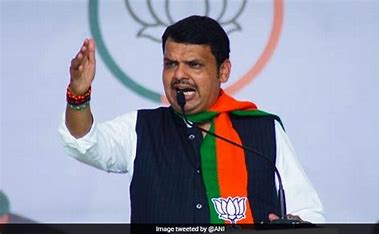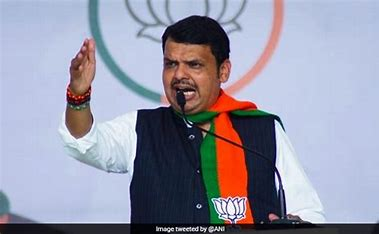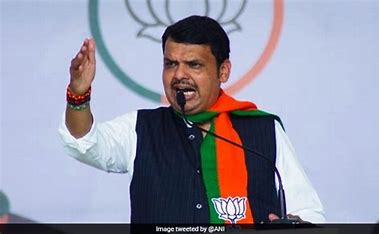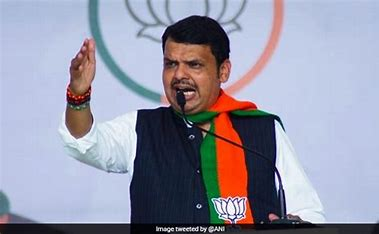
CM
On March 17, 2025, Nagpur, a city in Maharashtra, witnessed significant communal unrest that led to an indefinite curfew in several areas. The violence was ignited by protests from Hindu nationalist groups, notably the Vishva Hindu Parishad (VHP) and Bajrang Dal, demanding the removal of the tomb of Mughal emperor Aurangzeb. These groups argue that Aurangzeb’s legacy is controversial and that his tomb should be relocated to Aurangabad. citeturn0news10
The protests escalated when members of Muslim communities marched near a police station, resulting in stone-throwing incidents. The clashes led to injuries among police personnel, including deputy commissioners, and caused damage to vehicles and properties. In response, authorities imposed a curfew in multiple parts of Nagpur to restore order. citeturn0news11
Maharashtra Chief Minister Devendra Fadnavis condemned the violence, describing it as a “pre-planned conspiracy.” He noted that the mob specifically targeted certain houses and establishments, indicating a coordinated effort to disrupt communal harmony. Fadnavis also linked the unrest to the release of the film “Chhaava,” which portrays the life of Chhatrapati Sambhaji Maharaj. He suggested that the movie has reignited anger against Aurangzeb, contributing to the recent tensions. citeturn0search5
Deputy Chief Minister Eknath Shinde echoed Fadnavis’s concerns, labeling the incident a “planned conspiracy.” He emphasized that the violence stemmed from protests defending the honor of Chhatrapati Sambhaji Maharaj and criticized those supporting Aurangzeb. Shinde also noted that many of the agitators appeared to be outsiders, further suggesting the orchestrated nature of the disturbances. citeturn0search7
Opposition leaders have criticized the state government’s handling of the situation. Congress leader Renuka Chowdhury called for a suspension notice in the Rajya Sabha to address the “complete breakdown of communal harmony and law and order” in Nagpur. She highlighted that Nagpur, with its 300-year history, has rarely experienced such riots, questioning the government’s preparedness and response. citeturn0search7

The incident has sparked a broader debate about historical narratives and their impact on contemporary society. The film “Chhaava” has been praised for its portrayal of regional pride but also criticized for potentially fueling communal sentiments. This underscores the delicate balance required when depicting historical figures with complex legacies.
In the aftermath, authorities have maintained a heavy security presence in Nagpur to prevent further unrest. The curfew remains in effect, and efforts are ongoing to promote dialogue and restore communal harmony. The state government has vowed to take strict action against those found responsible for inciting violence and disturbing public order.
This episode serves as a poignant reminder of the potent influence of historical narratives and cultural representations on modern societal dynamics. It also highlights the challenges faced by governments in managing communal tensions and ensuring the maintenance of public order in a diverse and pluralistic society.
navlistNagpur Violence Triggers Curfew Amidst Communal Clashesturn0news10,turn0news11On March 17, 2025, Nagpur, a city in Maharashtra, witnessed significant communal unrest that led to an indefinite curfew in several areas. The violence was ignited by protests from Hindu nationalist groups, notably the Vishva Hindu Parishad (VHP) and Bajrang Dal, demanding the removal of the tomb of Mughal emperor Aurangzeb. These groups argue that Aurangzeb’s legacy is controversial and that his tomb should be relocated to Aurangabad. citeturn0news10
The protests escalated when members of Muslim communities marched near a police station, resulting in stone-throwing incidents. The clashes led to injuries among police personnel, including deputy commissioners, and caused damage to vehicles and properties. In response, authorities imposed a curfew in multiple parts of Nagpur to restore order. citeturn0news11
Maharashtra Chief Minister Devendra Fadnavis condemned the violence, describing it as a “pre-planned conspiracy.” He noted that the mob specifically targeted certain houses and establishments, indicating a coordinated effort to disrupt communal harmony. Fadnavis also linked the unrest to the release of the film “Chhaava,” which portrays the life of Chhatrapati Sambhaji Maharaj. He suggested that the movie has reignited anger against Aurangzeb, contributing to the recent tensions. citeturn0search5
Deputy Chief Minister Eknath Shinde echoed Fadnavis’s concerns, labeling the incident a “planned conspiracy.” He emphasized that the violence stemmed from protests defending the honor of Chhatrapati Sambhaji Maharaj and criticized those supporting Aurangzeb. Shinde also noted that many of the agitators appeared to be outsiders, further suggesting the orchestrated nature of the disturbances. citeturn0search7

Opposition leaders have criticized the state government’s handling of the situation. Congress leader Renuka Chowdhury called for a suspension notice in the Rajya Sabha to address the “complete breakdown of communal harmony and law and order” in Nagpur. She highlighted that Nagpur, with its 300-year history, has rarely experienced such riots, questioning the government’s preparedness and response. citeturn0search7
The incident has sparked a broader debate about historical narratives and their impact on contemporary society. The film “Chhaava” has been praised for its portrayal of regional pride but also criticized for potentially fueling communal sentiments. This underscores the delicate balance required when depicting historical figures with complex legacies.
In the aftermath, authorities have maintained a heavy security presence in Nagpur to prevent further unrest. The curfew remains in effect, and efforts are ongoing to promote dialogue and restore communal harmony. The state government has vowed to take strict action against those found responsible for inciting violence and disturbing public order.
This episode serves as a poignant reminder of the potent influence of historical narratives and cultural representations on modern societal dynamics. It also highlights the challenges faced by governments in managing communal tensions and ensuring the maintenance of public order in a diverse and pluralistic society.
navlistNagpur Violence Triggers Curfew Amidst Communal Clashesturn0news10,turn0news11On March 17, 2025, Nagpur, a city in Maharashtra, witnessed significant communal unrest that led to an indefinite curfew in several areas. The violence was ignited by protests from Hindu nationalist groups, notably the Vishva Hindu Parishad (VHP) and Bajrang Dal, demanding the removal of the tomb of Mughal emperor Aurangzeb. These groups argue that Aurangzeb’s legacy is controversial and that his tomb should be relocated to Aurangabad. citeturn0news10
The protests escalated when members of Muslim communities marched near a police station, resulting in stone-throwing incidents. The clashes led to injuries among police personnel, including deputy commissioners, and caused damage to vehicles and properties. In response, authorities imposed a curfew in multiple parts of Nagpur to restore order. citeturn0news11
Maharashtra Chief Minister Devendra Fadnavis condemned the violence, describing it as a “pre-planned conspiracy.” He noted that the mob specifically targeted certain houses and establishments, indicating a coordinated effort to disrupt communal harmony. Fadnavis also linked the unrest to the release of the film “Chhaava,” which portrays the life of Chhatrapati Sambhaji Maharaj. He suggested that the movie has reignited anger against Aurangzeb, contributing to the recent tensions. citeturn0search5
Deputy Chief Minister Eknath Shinde echoed Fadnavis’s concerns, labeling the incident a “planned conspiracy.” He emphasized that the violence stemmed from protests defending the honor of Chhatrapati Sambhaji Maharaj and criticized those supporting Aurangzeb. Shinde also noted that many of the agitators appeared to be outsiders, further suggesting the orchestrated nature of the disturbances. citeturn0search7
Opposition leaders have criticized the state government’s handling of the situation. Congress leader Renuka Chowdhury called for a suspension notice in the Rajya Sabha to address the “complete breakdown of communal harmony and law and order” in Nagpur. She highlighted that Nagpur, with its 300-year history, has rarely experienced such riots, questioning the government’s preparedness and response. citeturn0search7
The incident has sparked a broader debate about historical narratives and their impact on contemporary society. The film “Chhaava” has been praised for its portrayal of regional pride but also criticized for potentially fueling communal sentiments. This underscores the delicate balance required when depicting historical figures with complex legacies.
In the aftermath, authorities have maintained a heavy security presence in Nagpur to prevent further unrest. The curfew remains in effect, and efforts are ongoing to promote dialogue and restore communal harmony. The state government has vowed to take strict action against those found responsible for inciting violence and disturbing public order.
This episode serves as a poignant reminder of the potent influence of historical narratives and cultural representations on modern societal dynamics. It also highlights the challenges faced by governments in managing communal tensions and ensuring the maintenance of public order in a diverse and pluralistic society.

navlistNagpur Violence Triggers Curfew Amidst Communal Clashesturn0news10,turn0news11







